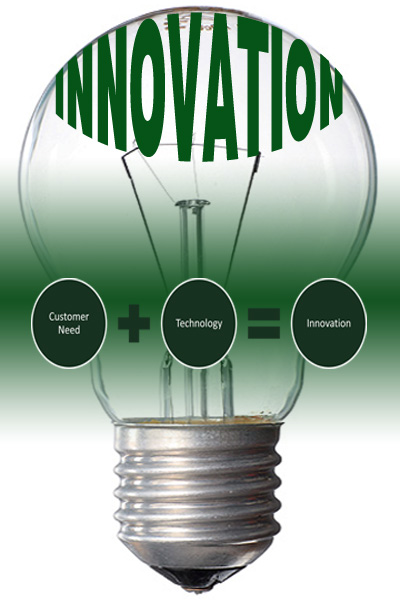The 4M's of Innovation - Methodology

This is the third article in a series that summarizes steps corporations can take to become leading edge innovators using the 4 M approach - Motivation, Mind-melding, Methodology, and Metrics. This article will focus on the third M; Methodology.
Methodology:
In addition to the usual method of setting up a Design of Experiment and assigning timelines and milestones, it is crucial to incorporate well defined applications (customer needs) into the project scope if your organization hopes to see some sort of ROI in either the short or long term. This pertains to applied research projects within a manufacturing environment as well as pure research conducted in isolated skunk-work environments.
Even though scientists and engineers are focused on specific technologies, business leaders should not be. If commercial viability is the end-game, the scope of any R&D project should be predicated upon addressing a specific customer need. Keep in mind though that R&D is always uncertain and some (even most) technology development projects will not solve the customer need as intended. But these projects are not to be discounted, because they could very well end up serving a completely different customer need. If technology is not developed with some application in mind, more often than not they will die a slow death in someone's desk drawer - not because they don't work - but because they don't have any immediate application that business managers can leverage to meet a customer need.
A perfect example was illustrated in a presentation at the 2011 World Innovation Convention given by Richard Seymour, entitled“The Future of the Future, 2011”. I’m paraphrasing from memory, but essentially the message was about the laser which was first invented circa 1960 as ‘pure research’. It sat on a shelf gathering dust for two decades until someone found an application for it. Apparently sometime in the 1980’s it was used to produce glass optical fiber which revolutionized telecommunications. This acted as a catalyst for all the other applications lasers are used for today. In my mind, the way the scientists went about the invention of the laser was like putting the cart before the horse. The laser was a great pure research project, but if some dialogue regarding applications by way of brainstorming with other researchers, industry experts and business minds had taken place from the beginning of development, the laser would have been in use twenty years earlier. I cannot stress enough the importance of having possible applications in mind for a technology, even if it that project is in pure research stages.
“Only a tiny subset of business experiments yield quick, clear, and complete results. Typical business experiments generate partial results, from time to time, along a lengthy journey from launch to fruition. Only by following a rigorous learning process will you efficiently convert these partial answers into a clear, aggregate picture.”
The Other Side of Innovation, Govindarajan/Trimble
Although having specific applications in mind when developing a new technology is key, it is also important to note that Sales departments must be kept at bay once the project gets underway. If sales departments catch wind of a new technology that could give them a leg up on the competition, you can be sure that they will sell it to their customers whether the technology has been proven out yet or not. This is very dangerous because if commitments are made to customers and a technology turns out not to be feasible after development, customers will lose trust in your company. Taking a ‘hands-off from sales teams’ approach also allows for more creative and well thought out research that is still very disciplined in tracking and methodology. It also allows for the project scope to change if application feasibility does not match the original hypothesis.
Researchers and business leaders are then free to search for creative new uses and are not limited by any promises made to customers. The company 3M illustrated this point with the well-known story of the adhesive that failed for the purpose it was intended for, but for which the organization was able to find another application in the form of the popular ‘Post-it’ notes.

In summary, collaboration is important amongst cross-functional groups - including the sales teams - to come up with ideas for possible technology applications. But if caution is not taken to keep innovation projects away from sales presentations, technologies could be sold before they're ready. This means your R&D team won’t have much flexibility to change project scope because the Sales team has already let the cats out of the bag. Herding cats is really time-consuming, which ultimately exhausts your R&D resources and turns them into fire-fighters rushing to put out the fire when they should really be farmers, carefully planting seeds and cultivating whatever grows.
This is the third M and the third step a corporation should take to optimize their innovation efforts. My next article will focus on the fourth M - Metrics at http://jmholmes.hubpages.com/hub/The-4Ms-of-Innovation-Metrics







